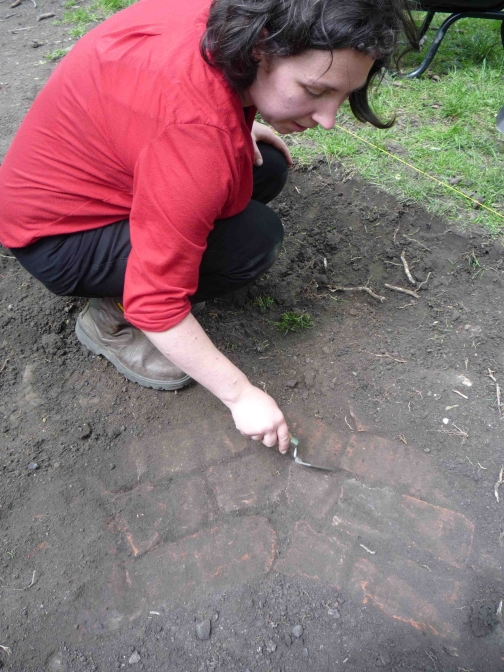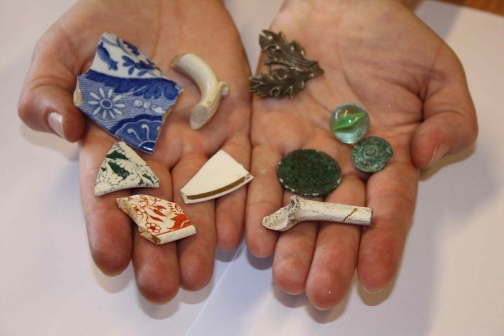By Tanja Bastia, IDPM
A couple of weeks ago we had a one day workshop (link to http://informalpoliticsinthecity.wordpress.com/) on ‘informal politics in the city’, funded by cities@manchester. The papers included circular migration and migrants’ identities in Southern Africa; step-migration through Western African countries; street peddling in Barcelona; and two papers on Buenos Aires. The aim was to bring together discussions about informality and migration. While there is a large literature on informality and internal migration, there is far less work on cross-border (international) migration and informality. Towards the end of the workshop one of the participants who works on migration and informality in Africa asked another, who works on informal housing in Buenos Aires, “what do you mean by ‘urbanising the informal settlement’”? I remember asking the same question when I first started researching migration and informal settlements in Buenos Aires.
There is the issue of the extent to which concepts translate across different regions. The straightforward answer is that ‘urbanising’ in the Latin American context is usually referred to as ‘upgrading’ in Africa. It refers to the process of ‘opening up’ informal settlements through widening and paving of main roads. This makes the informal settlement look more like a ‘normal’ – read formal – neighbourhood (though in some countries informal parts of the city are built on square grids). Widening and paving of main roads means that services which are usually available in other parts of the city also become available in the informal settlement. For example, police can patrol the streets, ambulances can get to those who need it, bricks and building material can be brought by motorised vehicles instead of having to be pushed in wheelbarrows.
‘Urbanising an informal settlement’ also involves the state arranging for the provision of water services, electricity and sewers, to the same standard as in other parts of the city. The 2003 Plan to Urbanise Villas and Precarious Neighbourhoods of the City of Buenos Aires includes three main objectives:
- The physical and social integration of precarious settlements so that they become similar to existing urban neighbourhoods
- Improved quality of life for those living in informal settlements with the provision of services to a similar standard to those available in the rest of the city
- The integration of the community in the process of decision-making through the active encouragement of the participation of the population living in precarious settlements in the configuration of their habitat (Plan summary available http://www.cnvivienda.org.ar/revistas/revista9/CiudadBA_9.pdf)
However, the question points to an issue that is more complex than the translation of concepts across different regions. When I first came across the term ‘urbanising the villas’ – as the informal settlements in Buenos Aires are known – I was perplexed by the etymology of the term. To ‘urbanise’ means to make something more urban, usually referred to the process of urbanisation – the growth of the urban population or the turning of village or town into a city. However, in this particular case, the term ‘urbanise’ is being referred to informal neighbourhoods. How can you ‘make more urban’ something that is rapidly becoming the very image of urban life for the majority of the urban population across the globe? Is there any aspect of the ‘slum’, as informal settlements are despectively called, that is not ‘urban’? The use of the term ‘urbanise’ to refer to the villas, favelas or any other precarious part of the city implies that informal settlements are not really part of the city, a reference to the early process of urbanisation, when informal settlements were seen as vestiges of village life in the city and their inhabitants as ‘peasants in the city’ (see e.g. Bryan Roberts Cities of Peasants, published in 1978).
Internal migration was indeed important for the growth of informal settlements. In Buenos Aires, villas emerged during the 1930s and the process of industrialisation, to house the large number of workers that were unable to find housing in other neighbourhoods. As in other Latin American countries, villas were built on public land and were an integral part of the growth of the city, with the main difference being that the state played a small role or no role at all in the provision of basic services, such as water, electricity or sewage. The auto-construction of the houses was often complemented by collective efforts to bring basic services to the informal settlements.
The military regimes during the 1970s attempted to eradicate informal settlements from the city of Buenos Aires, as these were seen as key bastions of opposition. The city was associated with order, cleanliness and obedience and villas were seen as lacking in these characteristics. They were associated with dirt, chaos, subversiveness. The military regimes therefore aimed to move all informal settlements on the other side of the boundary of the city of Buenos Aires. Racist stereotyping preceded the forced evictions and over 200,000 are thought to have been forcefully evicted from the city of Buenos Aires (see Blaustein, Eduardo, Prohibido vivir aquí: la erradicación de las villas durante la dictadura, published in 2006).
With the return of democracy in 1983 many of these residents returned to the places from which they had been evicted and they were increasingly joined by migrants from neighbouring countries, such as Paraguay and Bolivia, and during the 1990s, Peru. Some informal settlements today are associated with specific nationalities. For example, the villa 21-24 is predominantly Paraguayan and the parish church bears the name of a Paraguayan Virgin, the Virgin of Caacupé. However, while there might be a cultural association with Paraguayan ancestry, and while anecdotal accounts give estimates of ‘90% of those in 21-24 are from Paraguay’, a recent census conducted by the Instituto de la Vivienda de la Ciudad, (IVC – City Housing Institute) indicates that in fact only just over a third of its residents were born in Paraguay (34.7%), while 48% are Argentinean (they might have Paraguayan parents but given that they were born in Argentina, they are Argentinean). This is significant, given the fact that many public authorities attempt to ‘export’ the issue of informality by attributing it to a problem generated by the migration from neighbouring countries.
Migrants from neighbouring countries and Peru have suffered decades of discrimination. Xenophobic attitudes in public discourse intensified during the 1990s, during the Menem government, when migrants from neighbouring countries, particularly Bolivia, were accused of stealing jobs from Argentineans, and therefore increasing unemployment, increasing crime rates and insecurity, and blamed for health scares, such as a cholera outbreak. These xenophobic attitudes were also present in everyday actions, such as a brutal murder of Marcelina Meneses, a young Bolivian woman, who was pushed off a train in Buenos Aires in January 2001 while carrying her ten month old son, who also died in the accident. The event, painfully illustrates the everyday acceptance of xenophobic and racist attitudes towards migrants from neighbouring countries.
It is clear, however, that much has changed in Argentina, which today boasts one of the most progressive migration legislations in the world, the law 25,871, which was approved in 2003 after years of lobbying by civil society organisations, and implemented the year after. However, migration as a subject, as in many other parts of the world, continues to be studied from the point of view of the nation, that is, it suffers from methodological nationalism. Beyond public figures that attribute the growth of informal settlements to a problem of neighbouring countries, there is very little research that takes a deeper look at the association between informality and migration (some notable exceptions include work by Alejandro Grimson, Lucia Groisman and Carla Gallinati).
In a pilot research project we are currently exploring the relationship between informality and migration, specifically through the everyday politics of informal settlements. We are particularly interested in understanding how migrants organise as ‘neighbours’ (vecinos), often in conjunction with non-migrants, around issues that affect them. These sometimes relate to their condition as migrants, but most of the time, they organise on the basis of their experience as residents of informal settlements.
Organisational strategies and aims vary greatly. However, we find that the scale at which we address migrants’ everyday politics matter. When we look at the city as a whole, migrants tend to organise around their particular country of origin, and on the basis of their national identity. We find many organisations that (claim to) represent Bolivians, Paraguayans or Peruvians. However, when we shift the focus to the informal settlement, there are many more cross-national organisations, those made up of migrants from different countries, as well as migrants and Argentineans. While it is not surprising that the everyday politics in informal settlements aim to address the most immediate needs – adequate access to electricity, connection to sewage system, better security and access to health services – what is surprising is the absence of claims in relation to their condition as migrants.
Does this mean that migration is irrelevant at the more micro level of analysis, at the level of informal settlement? Some interviewees vividly remember the nights following the 2001 economic collapse when they had to gather around fires to fend off attacks from other groups of migrants. However, most grass-roots organisations are able to transcend differences on the basis of nationality and unite their activists around issues that affect them all. This is encouraging, particularly if taken together with the progress at the national level on migration legislation, as it could point to a top down and almost simultaneous bottom up recognition of difference but a willingness to work across these differences, to form what Amin terms a ‘society of strangers’ (see Ash Amin, Land of Strangers, published 2012). There remains, however, the level of the city, where public authorities as well as those claiming to represent different groups of migrants, reproduce and often strengthen divisions among groups of strangers.
In the same way that informal settlements are an integral part of the city and, many would argue, are here to stay as long as the current system remains in place, so too is migration. To wish to ‘urbanise’ informal settlements, lends little recognition to the structural elements that have generated existing inequalities, the same inequalities that encourage people to move from one country to another, despite having to live in an informal settlement. What is clearly missing is the recognition of the fact that informal settlements are already urban, they are an integral part of the city life, and its residents are already proposing creative solutions to their problems. Listening and paying attention to these proposals is a vital ingredient of constructing a more just, and less unequal, city in the future.
The project to which this blog refers to “Seeking justice: migration, informality and political participation in Buenos Aires” is being carried out by Tanja Bastia and Jerónimo Montero Bressán, in collaboration with Diana Mitlin and Melanie Lombard (Global Urban Research Centre, University of Manchester). We gratefully acknowledge the funding from cities@manchester.







